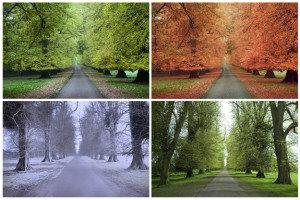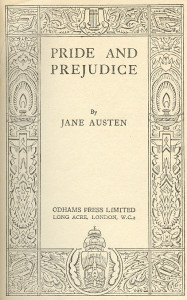One Hundred Miles from Manhattan—A Modern Novel by Chris Orcutt
Recently I completed work on a book that began as a collection of stories, and which ended up being what I term a “modern novel.” The book is now with my ebook formatter, Lisa DeSpain, and, barring unforeseen complications, will be available for purchase sometime in the next couple of weeks.
The title of the novel is One Hundred Miles from Manhattan. It tells the story of a fictional wealthy community in Upstate New York, where the village and the surrounding rolling hills conceal tales of love, lust, tragedy and small wars.
The novel provides glimpses into the lives of wealthy “hilltoppers” and modest townies. There are lavish estates, horses, guns, Wellies, weekenders, Range Rovers, redheads, contractors, a country club, a train line, a diner and much more.
Now, some of you might be wondering why I call One Hundred Miles from Manhattan a “modern novel.”
Well, because it’s told from 10 different points of view, and because the timeline is segmented.
 Basically, you know how the movie Pulp Fiction is one story, but it’s chopped up and the scenes are presented out of order?
Basically, you know how the movie Pulp Fiction is one story, but it’s chopped up and the scenes are presented out of order?
That’s what I do with this novel. It’s the story of one year in this community of Wellington, New York, but the events are presented out of order. The book starts with a chapter that begins in the late spring/early summer, then goes to the early spring, then the fall, etc. It is not in chronological order.
Each of the chapters is from the POV of a different character, and so we see a small part of Wellington through that character’s eyes. Many characters overlap between the chapters, and so do the events. The POV characters include a trophy wife, a medical doctor, a single mother, a contractor/local Casanova, and a Manhattan book editor.
 The reason I wrote it this way is because as much as I admire the single POV novel—e.g., Pride & Prejudice, The Catcher in the Rye, and The Great Gatsby—in today’s ultramodern society, where everyone is a star (or considers himself one; Facebook, Foursquare, Instagram, Twitter, Snapchat), everyone’s story or POV contributes to the story as a whole. Nowadays, it doesn’t make sense that any one person would be capable of telling the complete story of a town.
The reason I wrote it this way is because as much as I admire the single POV novel—e.g., Pride & Prejudice, The Catcher in the Rye, and The Great Gatsby—in today’s ultramodern society, where everyone is a star (or considers himself one; Facebook, Foursquare, Instagram, Twitter, Snapchat), everyone’s story or POV contributes to the story as a whole. Nowadays, it doesn’t make sense that any one person would be capable of telling the complete story of a town.
Also, the community of Wellington, like some other wealthy communities we know, is highly stratified, and there isn’t a great deal of interaction between the wealthy and the poor, or even between the old money and the nouveau riche.
I first got this idea of writing a novel about a wealthy community 22 years ago, back when I was a reporter in a small town similar to Wellington. But at the time, I could only envision the story being told from the POV of the local reporter. I’m so glad that I waited to write this book, because I think the 10 points of view gives the reader a richer, broader experience of the town, and because 22 years ago, my writing skills weren’t even close to what they are now.
Here’s a brief excerpt from the novel. In this scene, a Manhattan book editor is driving into Wellington for the first time, so we see this rarefied community through an outsider’s eyes:
Although I’d had several authors from Wellington over the years, including a former editor pal turned bestselling mystery novelist, not one of them had deigned to invite me to so much as a cocktail party up here. Creeping through the village that Saturday morning in a rental car, I passed a shiny aluminum diner and myriad antiques dealers and continued on through a hamlet mysteriously called Rabbitsville (although I didn’t see a single rabbit to warrant the name). From there, I followed sandwich boards pointing to Fox Hill.
The road ribboned out in front of me, over rolling green hills and miles of black wooden fence. The sky was a soft summer blue. In the hollows, pockets of thin fog hovered over the grass. The whole countryside had a vaguely mystical aura, like Mr. Darcy’s Derbyshire.
Most of the drive from Manhattan, however, had been tedious. Droning along the empty and wooded Taconic Parkway, still half-asleep, I had started to question the wisdom of traveling two hours upstate for a young woman with whom I had done nothing but have inordinate sex—and that only in her favored cowgirl position. To be fair, we had managed to squeeze in a few substantial conversations—about books (for a young woman of prodigious sexual appetites she was surprisingly well-read, Chekhov’s stories being her favorites); about technology (she embraced the useful, citing her automatic lights and a robotic vacuum cleaner that perpetually crawled around the apartment); and about lifestyles (she adored simplicity bordering on the Spartan; every room in her apartment contained minimal furniture and absolutely no knickknacks)—but since those conversations invariably took place before or after sex, I considered them suspect, and not representative of how we would relate under less sybaritic circumstances. For that reason, the weekend was a test, or, as she had put it, “a trial run for us.”
— from One Hundred Miles from Manhattan
by Chris Orcutt
_____
I will post again when the novel is released, and I hope you buy it and enjoy it. Without question, it is my best writing to date.
This book has taken a great toll on me physically and emotionally, but I think the result is worth it.
—Chris
_____
*The author has permission and/or Creative Commons rights to use the following photos from Flickr on the cover of this book: “Hunters Wellies CARNABY BOA…” and “Turquoise and Brass Earrings and Necklaces…” by Maegan Tintari; “DSC_1255” (the fox hunt) by Bethany; “Fall Foliage” by Kimberly Vardeman; “Rape Seed Field” by Les Haines; “Mansion on a Hill” by Lucas Wihlborg; “Just a Perfect Day” by Alison Christine. The photo “Wellington Sign” is by Karen Kruschka.

Comments (0)